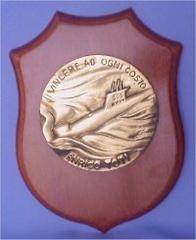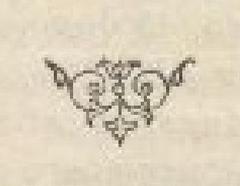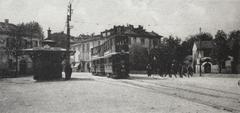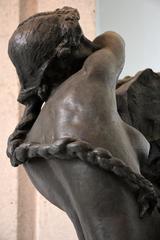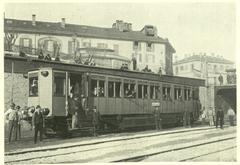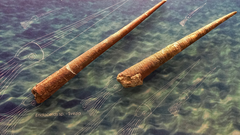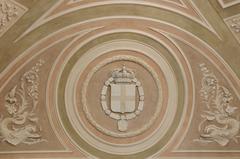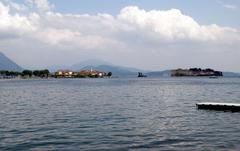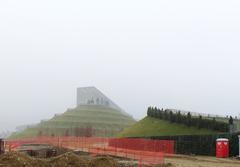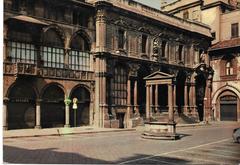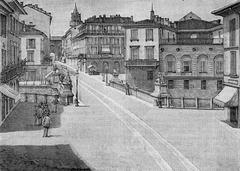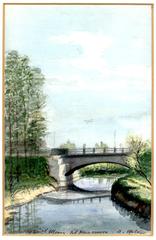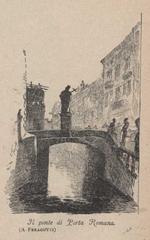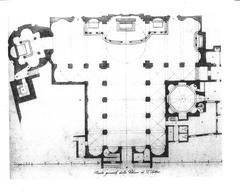Visiting Museo Poldi Pezzoli: Hours, Tickets, and Tips
Date: 18/07/2024
Introduction
The Museo Poldi Pezzoli, located in the heart of Milan, is more than just a museum; it is a window into the artistic and cultural heritage of 19th-century Italy. Founded by Gian Giacomo Poldi Pezzoli, a Milanese nobleman born in 1822, the museum is a testament to his passion for art and dedication to preserving cultural artifacts. Poldi Pezzoli transformed his private residence into a public museum, enlisting the help of renowned artists and architects to create a space that would house his extensive collection of art, weaponry, armor, and decorative objects (Museo Poldi Pezzoli Website).
Opened to the public in 1879, the Museo Poldi Pezzoli offers visitors a journey through centuries of artistic expression, from Renaissance masterpieces by Botticelli and Mantegna to exquisite examples of Italian weaponry and armor. Each room in the museum reflects different artistic movements and historical periods, providing a unique and immersive experience for visitors. The museum’s intimate atmosphere, reminiscent of a private home, allows guests to connect with the past and appreciate the meticulous curation of its founder.
Today, the Museo Poldi Pezzoli continues to be a vibrant cultural hub, hosting temporary exhibitions, educational programs, and events that engage with contemporary art and ideas while remaining true to its historical roots (Museo Poldi Pezzoli Website). Whether you’re an art lover, history enthusiast, or just looking for a unique experience in Milan, this comprehensive guide will help you make the most of your visit, providing detailed information on key attractions, visiting hours, ticket prices, travel tips, and more.
Table of Contents
- Introduction
- History and Significance of Museo Poldi Pezzoli
- Key Attractions and Exhibits
- Visitor Information
- Inside the Museum
- Exploring the Collection
- Beyond the Museum
- FAQ
- Conclusion
History and Significance of Museo Poldi Pezzoli
The Man Behind the Museum - Gian Giacomo Poldi Pezzoli
Born in 1822, Gian Giacomo Poldi Pezzoli inherited a considerable fortune and a passion for art from his family. His life’s work became the creation of a space where art, history, and culture intertwined, a vision that materialized in the Museo Poldi Pezzoli.
A House Transformed - From Private Residence to Public Museum
Originally belonging to Gian Giacomo’s mother, Rosa Trivulzio, the house underwent a dramatic transformation under his guidance. He enlisted the help of renowned artists and architects of the day, including Giuseppe Balzaretto and Luigi Scrosati, to remodel the residence into a fitting backdrop for his growing art collection.
A Legacy Unveiled - The Museum’s Opening and Expansion
Upon Gian Giacomo’s death in 1879, his home, meticulously curated and filled with his treasured art collection, opened its doors to the public as the Museo Poldi Pezzoli. His will stipulated that the house and its contents be preserved as a museum for the enjoyment and education of future generations. Over the years, the museum has expanded beyond the original rooms, incorporating additional spaces and enriching its collection through donations and acquisitions.
A Journey Through Time - The Museum’s Diverse Collection
The Museo Poldi Pezzoli houses a diverse collection spanning centuries and artistic styles. Visitors can wander through exquisitely decorated rooms, each reflecting a different period or artistic movement. From Renaissance masterpieces by Botticelli and Mantegna to exquisite examples of weaponry and armor, the museum offers a captivating journey through art history.
The Significance of Museo Poldi Pezzoli
The Museo Poldi Pezzoli holds a unique place in the landscape of Italian museums. Its significance extends beyond its impressive collection, encompassing several key aspects:
- Reflection of 19th-Century Collecting: The museum provides invaluable insight into the collecting practices and tastes of 19th-century Milanese aristocracy. Gian Giacomo’s meticulous curation and the house’s design offer a window into the era’s fascination with historical styles and the desire to create immersive artistic environments.
- Treasure Trove of Italian Art: The museum boasts a remarkable collection of Italian art, particularly from the Lombardy region. Masterpieces by renowned artists like Andrea Mantegna, Giovanni Bellini, and Piero della Francesca showcase the evolution of Italian painting and provide an unparalleled opportunity to appreciate the nuances of these artistic movements.
- Living Legacy: Unlike many museums housed in purpose-built structures, the Museo Poldi Pezzoli retains the intimate atmosphere of a private home. This quality allows visitors to connect with the past more personally, imagining themselves as guests of Gian Giacomo himself, surrounded by his beloved art collection.
- Cultural Hub: Today, the Museo Poldi Pezzoli is not merely a repository of art but a vibrant cultural center. The museum hosts temporary exhibitions, educational programs, and events that engage with contemporary art and ideas while remaining true to its historical roots.
Key Attractions and Exhibits
The Armory
The Armory is a testament to Pezzoli’s fascination with weaponry and armor. It showcases an impressive collection of arms and armor, primarily from 14th-17th century Italy. Highlights include:
- Armor of a Man-at-Arms (c. 1580-1600): This imposing suit of armor, crafted in Milan, exemplifies the high quality of Milanese armorers.
- Parade Shield (c. 1550-1570): This ceremonial shield, attributed to the renowned Negroli workshop in Milan, is a masterpiece of Renaissance artistry.
- Various Swords, Daggers, and Firearms: The armory also houses a diverse collection of swords, daggers, and firearms, each with its own unique history and craftsmanship.
The Black Room (Salone Dorato)
The Black Room, also known as the Salone Dorato, is a masterpiece of Renaissance interior design. Originally Pezzoli’s bedroom, it was transformed after his death to resemble a 15th-century Venetian room. Key features include:
- Intricately Carved Wooden Ceiling: The ceiling features intricate carvings and gilded details, creating a sense of opulence and grandeur.
- Flemish Tapestries: The walls are adorned with rich Flemish tapestries, woven with scenes from biblical and mythological stories.
- Portrait of Gian Giacomo Poldi Pezzoli: A prominent portrait of the museum’s founder, painted by Giuseppe Molteni, hangs in this room.
The Paintings Gallery
The Paintings Gallery is a journey through Italian art history, showcasing masterpieces from the 13th to 18th centuries. Notable works include:
- Polyptych of San Vincenzo Ferrer (c. 1473) by Andrea Mantegna: This altarpiece depicts the life and miracles of San Vincenzo Ferrer.
- Pieta (c. 1480) by Giovanni Bellini: This poignant depiction of the Virgin Mary cradling the dead Christ is a masterpiece of Venetian Renaissance art.
- Portrait of a Young Woman (c. 1505) by Piero Pollaiuolo: This captivating portrait exemplifies the Florentine Renaissance style.
The Renaissance Rooms
The Renaissance Rooms offer a glimpse into the domestic life and artistic sensibilities of the Italian Renaissance. Highlights include:
- Studiolo: This small, intimate room features intricate wooden paneling, a collection of antique books, and small-scale sculptures.
- Sala degli arazzi: This room showcases a series of tapestries depicting scenes from the life of Julius Caesar.
- Collections of Ceramics and Glassware: Impressive collections of Renaissance ceramics and glassware are also on display.
The Clock Room
The Clock Room houses a remarkable collection of clocks and watches from the 16th to 19th centuries. Highlights include:
- Astronomical Clock (c. 1560) by Bartolomeo Campi: This intricate clock tracks the movements of the sun, moon, and planets.
- Collection of Pocket Watches: The room houses a diverse collection of pocket watches, each representing a different era and style of watchmaking.
- Table Clocks and Longcase Clocks: Admire a variety of table clocks and longcase clocks, showcasing craftsmanship from different periods and regions.
The Lace and Textile Collection
The Lace and Textile Collection features a wide range of textiles, including lace, embroidery, and tapestries, dating from the 15th to 19th centuries. Highlights include:
- Venetian Lace: Exquisite examples of Venetian lace known for its delicate patterns and intricate designs.
- Embroidered Textiles: Various embroidered textiles showcasing different techniques and regional styles.
- Ecclesiastical Vestments: A selection of ecclesiastical vestments, showcasing luxurious fabrics and intricate embroidery.
The Porcelain Room
The Porcelain Room houses Pezzoli’s impressive collection of European and Oriental porcelain. Highlights include:
- Meissen Porcelain: Delicate floral designs and vibrant colors of Meissen porcelain.
- Chinese Export Porcelain: Selection of Chinese export porcelain made for the European market.
- Italian Porcelain: Examples from renowned manufactories such as Capodimonte and Doccia.
The Jewelry Collection
The Jewelry Collection features exquisite pieces reflecting the changing styles and techniques of jewelry making throughout the centuries. Highlights include:
- Renaissance Jewelry: Characterized by its use of precious stones, intricate goldwork, and symbolic motifs.
- Cameos and Intaglios: Carved from precious and semi-precious stones, showcasing the artistry of miniature carving.
- 19th-Century Jewelry: Reflecting the changing tastes and fashions of the era.
Visitor Information
Visiting Hours
The Museo Poldi Pezzoli is open from Tuesday to Sunday, 10:00 AM to 6:00 PM. It is closed on Mondays and certain public holidays. Always check the official website for the most up-to-date information on opening hours.
Ticket Prices
General admission tickets are €14.00. Discounts are available for seniors, students, and groups. Children under 12 can enter for free. Special rates apply for guided tours and special exhibitions. (Ticket Purchase)
Travel Tips
- Location: The museum is located in the heart of Milan, easily accessible by public transport.
- Nearby Attractions: Combine your visit with a trip to nearby historical sites such as the Teatro alla Scala, the Galleria Vittorio Emanuele II, and the Pinacoteca di Brera.
- Accessibility: The museum is wheelchair accessible, with facilities to assist visitors with disabilities. For more detailed information, please check the accessibility section on the museum’s website.
Special Events and Guided Tours
The Museo Poldi Pezzoli frequently hosts special events, temporary exhibitions, and guided tours. Check the museum’s official website or contact the visitor center for more information on upcoming events.
Photographic Spots
Capture your visit with stunning photos at some of the museum’s most photogenic spots, like the intricate wooden ceiling in the Black Room or the vibrant tapestries in the Sala degli arazzi.
Inside the Museum
Photography
Non-flash photography is generally permitted for personal use. However, some specific exhibitions or artworks may have restrictions, so it’s always best to check with museum staff.
Baggage and Coats
Large bags and backpacks are not permitted inside the museum. A cloakroom is available free of charge to store your belongings.
Food and Drink
Eating and drinking are not allowed inside the museum galleries.
Museum Shop
Before you leave, browse the museum shop, which offers a curated selection of books, art prints, souvenirs, and gifts inspired by the museum’s collection.
Exploring the Collection
Highlights
The Museo Poldi Pezzoli houses a diverse collection spanning centuries and artistic styles. Some of the must-see highlights include:
- Portrait of a Young Man by Andrea Mantegna: This iconic Renaissance portrait is renowned for its realism and psychological depth.
- The Pieta by Botticelli: A poignant depiction of the Virgin Mary cradling the dead Christ.
- Armor and Weapons Collection: The museum boasts an impressive collection of arms and armor from different periods.
- Renaissance Furniture and Decorative Arts: Admire exquisite examples of Renaissance furniture, tapestries, ceramics, and other decorative arts.
Audio Guides
Enhance your understanding and appreciation of the collection with the museum’s audio guides. Available in multiple languages, the audio guides provide insightful commentary on key artworks and the history of the museum.
Take Your Time
The Museo Poldi Pezzoli is best experienced at a leisurely pace. Allow ample time to wander through the beautifully decorated rooms, absorb the ambiance, and appreciate the details of the artworks.
Beyond the Museum
Exploring the Neighborhood
The Museo Poldi Pezzoli is located in the heart of Milan’s fashion district, renowned for its high-end boutiques, designer showrooms, and elegant cafes. Take a stroll along Via Montenapoleone and Via della Spiga to experience the city’s fashion scene.
Dining Options
Numerous restaurants, cafes, and bars are within walking distance of the museum, offering a range of dining options from traditional Italian cuisine to international flavors.
Other Attractions
The Museo Poldi Pezzoli is conveniently located near other notable attractions, including the Teatro alla Scala, the Galleria Vittorio Emanuele II, and the Duomo. Consider combining your visit with a trip to one of these iconic landmarks.
FAQ
Q: What are the Museo Poldi Pezzoli visiting hours? A: The museum is open Tuesday to Sunday, 10:00 AM to 6:00 PM. It is closed on Mondays, Christmas Day, and New Year’s Day.
Q: How can I purchase tickets for Museo Poldi Pezzoli? A: Tickets can be purchased online in advance on the museum’s official website.
Q: Is the Museo Poldi Pezzoli accessible for visitors with disabilities? A: Yes, the museum offers elevator access to all floors, wheelchairs upon request, and tactile tours for visually impaired visitors. Contact the museum in advance for specific needs.
Q: What are some nearby attractions to visit? A: Nearby attractions include the Teatro alla Scala, the Galleria Vittorio Emanuele II, and the Pinacoteca di Brera.
Conclusion
A visit to the Museo Poldi Pezzoli is a journey through time and a testament to the enduring power of art. It offers a unique perspective on 19th-century collecting practices, showcases the brilliance of Italian art, and continues to inspire and captivate visitors from around the world. Plan your visit today to immerse yourself in the beauty and history of this remarkable museum.
References
- Museo Poldi Pezzoli Website, n.d., Museo Poldi Pezzoli source url



